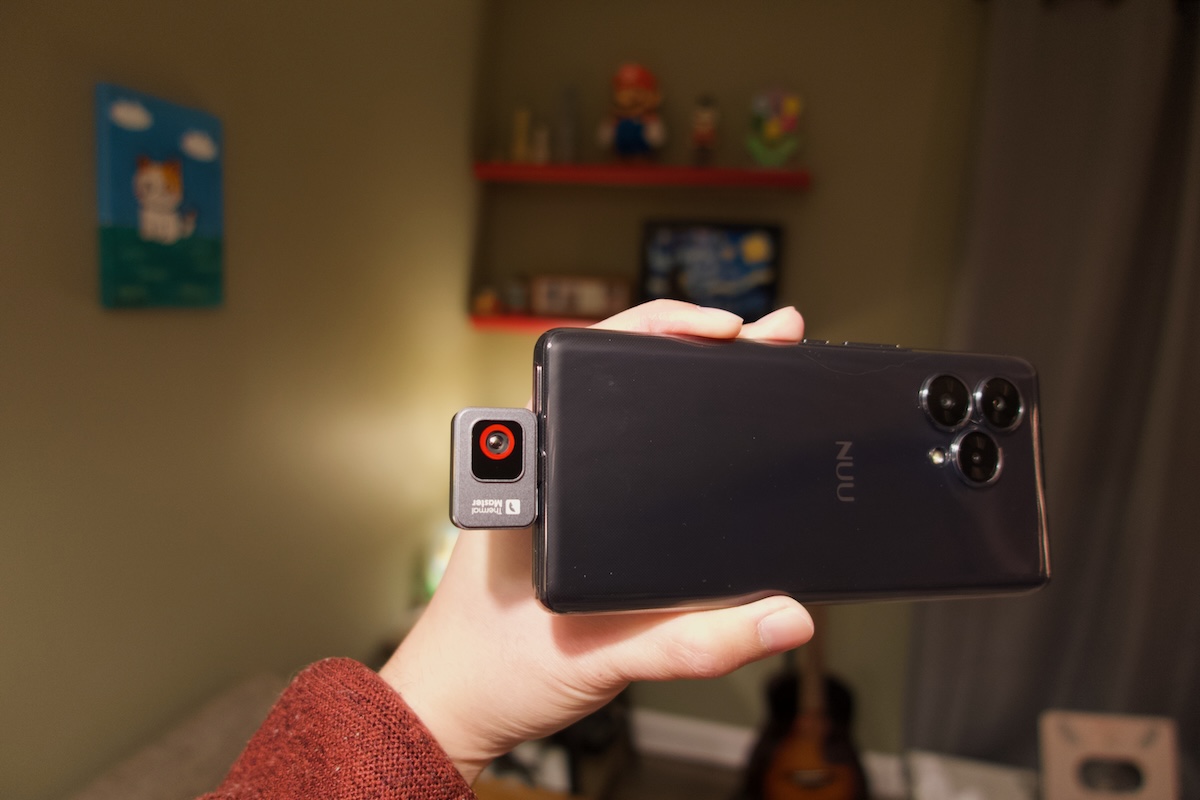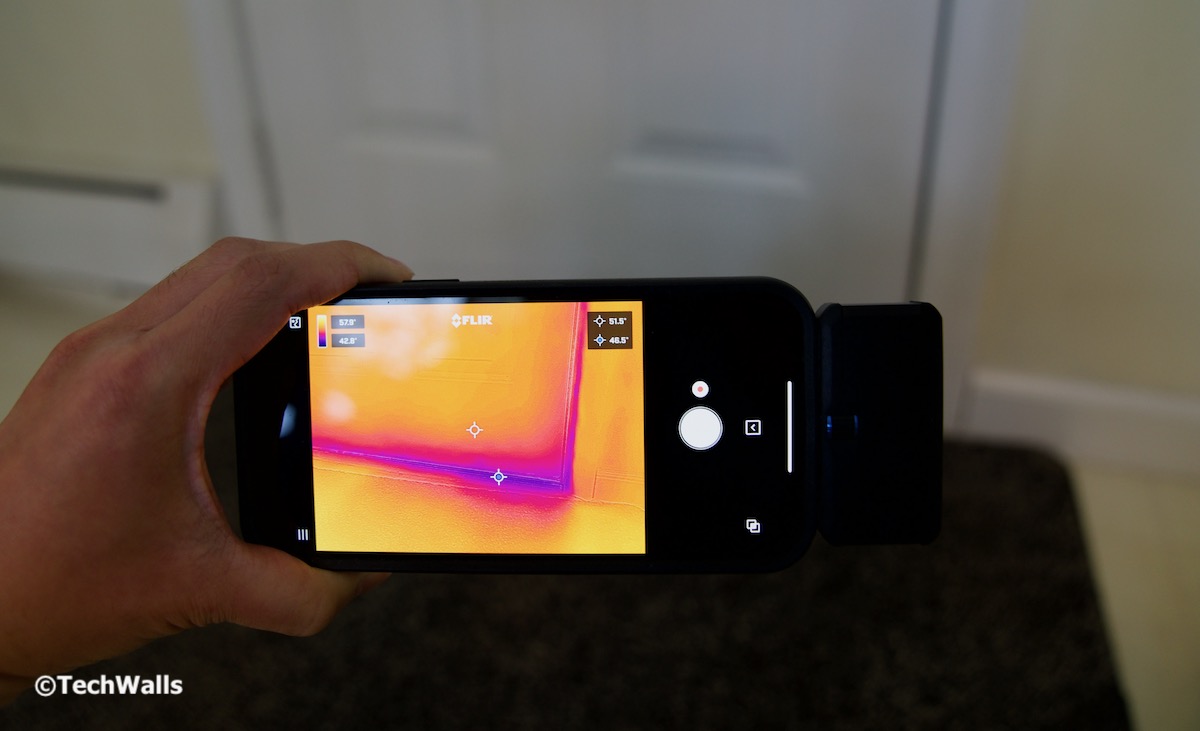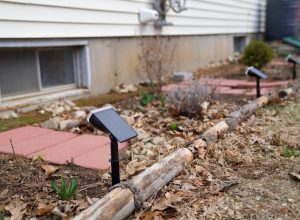As the market for plug-in thermal cameras for smartphones continues to grow, the Thermal Master P2 positions itself as one of the world’s smallest cameras. Weighing just 10 grams, this compact device combines impressive features with an affordable price tag. At the time of writing this review, you can buy the P2 on Amazon for just $199.
Disclosure: We received the camera as a courtesy for review purposes. However, the review is intended to provide honest, unbiased insights about the product, based on personal experiences and observations.
Specifications
- IR Resolution: 256×192 @12μm
- Measurement Range: -14℉~1112℉ (-10℃~600℃)
- NETD (Noise Equivalent Temperature Difference): ≤40mK @ 25℃, F#1.0
- Battery Life: 300~480 minutes (e.g., Samsung Galaxy S23+ 4700mAh battery lasts 367 minutes)
- Frame Rate: 25Hz
- Palette Options:
- 12 Palettes (White Hot, Black Hot, Iron Red, Red Hot, plus 8 others)
- Secondary option includes White/Black Hot + 6 palettes
- Colorbar Technology: Highlight temperature target
- Professional Analysis Features: Secondary point, line, and plane data analysis
- Sensor: ThermalMaster 2nd Generation ASIC with ULTRA CLEAR and AI TEMP technology
- Focusing Mode: Athermalized Prime Lens
- Field of View (FOV): 56.0°(H) x 42.2°(V)
- Weight: 9.7g
- Video Storage: Photo and video saving function
- Size: 27mm x 18mm x 9.8mm
- Operating Temperature: 5℉~131℉ (-15℃~55℃)
- Storage Temperature: -40℉~185℉ (-40℃~85℃)
- Support System: Android 6.0 and above
Design and Portability

The P2’s ultra-compact design is a significant advantage. Measuring only 27 x 18 x 9.8 mm, it’s smaller than many USB drives and easily fits in its included hard case, which adds a layer of protection. The case itself looks beautiful and durable at the same time, so you can carry it easily in a toolbox or even a pocket. Its minimalist design is matched by its simplicity of use; You can just install the app on your Android phone, plug the camera to the USB Type-C port, and you’re ready to go. Just make sure to install the right app; There is a Thermal Master app on the Google Play Store but that doesn’t work with the P2, you will need to install the Temp Master app. My only concern is that the app requests access to storage and location data, permissions that seem unnecessary for operating a thermal imaging camera. These requirements feel intrusive, especially since the core features of the P2 do not depend on such data. The camera uses a USB-C port but it is not compatible with iOS devices.

In case you use a very thick phone case, you probably can’t plug the camera into the phone’ USB-C port. Fortunately, there is an extension cable included in the box; This is still a bit inconvenient because you’ll have to find ways to mount the camera on your phone.
Performance and Features
Once connected, the app provides instant thermal imaging capabilities. The camera boasts a native resolution of 256 x 192 pixels, which can be enhanced through software to 512 x 384 pixels using the Razor X AI algorithm. While the enhancement improves sharpness, it creates a watercolor-like effect, making the images look less natural.

The camera’s sensitivity and ±1.5°C temperature accuracy across a range of -4°F to 1022°F (-16°C to 550°C) are ideal for applications like pipe inspection, electrical troubleshooting, and automotive diagnostics. A 25 fps frame rate ensures smooth visuals, so it is easier to scan and interpret heat signatures in real time.
Through its app, the P2 offers a wide range of options. Users can adjust the color palette to customize thermal maps, set emissivity for accurate readings on various surfaces, and use tools such as temperature points, lines, and area measurements to better analyze heat data. The ability to capture video and still images at a resolution of 1440 x 1080, complete with data overlays.

In practical use, the Thermal Master P2 shines across multiple industries. Tradespeople can quickly identify hot and cold pipes, locate wiring, and detect poorly insulated areas behind walls. Automotive mechanics can visualize coolant flow, locate blockages in engines, and monitor component temperatures safely. For electronic repairs, the P2 helps detect faults like blown capacitors by analyzing heat signatures on PCBs. Even in creative or outdoor settings, the P2 is a helpful tool for photographers and wildlife enthusiasts, enabling them to spot hidden animals or study heat patterns in nature.
Despite its strengths, the camera has limitations. The minimum focusing distance of 10 cm (4 inches) makes it less suitable for detailed close-up work on small electronic components. Additionally, the 15x digital zoom sounds good but it is not really useful due to the low native resolution. The app leaves much to be desired. Basic features like automatically tracking the hottest and coldest points in the thermal image are absent, forcing users to manually identify temperature extremes. Besides, the app’s interface struggles with usability; text fails to orient correctly in landscape mode. Another inconvenience is the need to re-enable the temperature scale every time the app is launched, a setting that should ideally be persistent.
The app also suffers from a recurring technical issue where a frame freezes and becomes superimposed on the live thermal display, creating a confusing view. This glitch does not resolve on its own and I often have to tap on the Calibrate button to fix it, but this adds an extra layer of hassle to what should be a seamless user experience.
Comparing the Thermal Master P2 to the FLIR ONE Pro
When compared to the FLIR ONE Pro, the Thermal Master P2 emerges as a strong competitor but serves slightly different user needs. The P2’s compact size, at just 10 grams, makes it far more portable than the FLIR ONE Pro. Moreover, the P2 is powered by your phone, so you never have to worry about battery life. On the other hand, the FLIR ONE Pro includes a height-adjustable connector, making it compatible with more phone cases, whereas the P2 often requires the removal of a thick case or the use of an extension cable for a proper connection.


In terms of performance, the P2 has a higher native resolution of 256 x 192 pixels compared to the FLIR ONE Pro’s 160 x 120. However, the FLIR ONE Pro compensates with MSX technology, which overlays visible details onto thermal images, providing greater context and clarity. The P2 relies on its Razor X AI algorithm for resolution enhancement, which improves sharpness but does not add real-world details. Temperature accuracy is comparable, with both devices rated at ±1.5°C, but the P2 offers a slightly broader temperature range, extending up to 1022°F (550°C) compared to the FLIR ONE Pro’s maximum of 752°F (400°C).
The software ecosystem also sets the two devices apart. FLIR One Pro has versions for both Android and iOS while the Thermal Master P2 supports Android only. FLIR’s app includes professional-grade features such as cloud integration and advanced reporting, making it more appealing to users who require detailed documentation and collaboration tools. The P2’s app, while functional and easy to use, is simpler in comparison, focusing more on basic analysis and reporting.
Price is another differentiating factor. The P2 is significantly more affordable than the FLIR ONE Pro, which retails for approximately $400. This makes the P2 a good choice for users on a budget who still require high-quality thermal imaging.
Final Thoughts
Pros
- Compact and lightweight
- Affordable
- Doesn’t need battery charging
- Good native resolution
- Wide temperature range
- Durable protective case
Cons
- App usability issues
- Intrusive permissions
- Works only with Android devices
- The Razor X AI creates unnatural, splotchy visuals
The Thermal Master P2 is an example of how technology is becoming more accessible. While it has some drawbacks, it delivers good value for its price. This is a practical tool for Android users seeking to add thermal imaging capabilities to their toolkit.
Buy Thermal Master P2 on Amazon
Disclosure: We might earn commission from qualifying purchases. The commission help keep the rest of my content free, so thank you!



